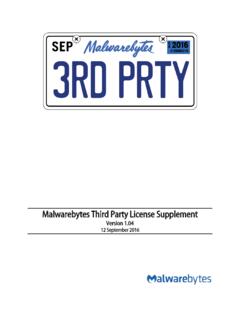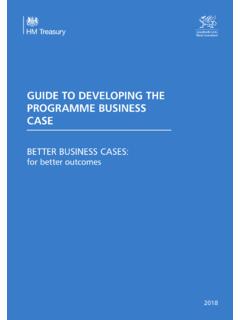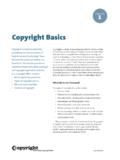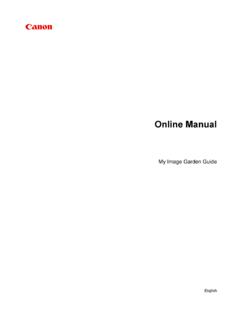Transcription of Guidelines on the Calibration of Non-Automatic Weighing ...
1 Guidelines on the Calibration of Non-Automatic Weighing InstrumentsEURAMET/cg-18 2009 PreviouslyEA-10/18 European Association of National Metrology Institutes EURAMET/cg-18 Calibration guide EURAMET/cg-18 Guidelines ON THE Calibration OF Non-Automatic Weighing INSTRUMENTS January 2009 Purpose This document has been developed to improve harmonisation in Calibration of Non-Automatic Weighing Instruments (NAWI). It gives advice to Calibration laboratories to establish practical procedures. The document contains detailed examples of the estimation of the uncertainty of measurements. EURAMET/cg-18 Authorship This document was originally published by EA Committee 2 (Technical Activities), based on a draft of the Ad hoc Working Group Mechanical measurements.
2 It is revised and re-published by the EURAMET Technical Committee for Mass and Related Quantities. Official language The English language version of this publication is the definitive version. The EURAMET Secretariat can give permission to translate this text into other languages, subject to certain conditions available on application. In case of any inconsistency between the terms of the translation and the terms of this publication, this publication shall prevail. Copyright The copyright of this publication (EURAMET/cg-18 - English version) is held by EURAMET 2007. It was originally published by EA as guide EA-10/18. The text may not be copied for resale and may not be reproduced other than in full. Extracts may be taken only with the permission of the EURAMET Secretariat. Guidance Publications This document represents preferred practice on how the relevant clauses of the accreditation standards might be applied in the context of the subject matter of this document.
3 The approaches taken are not mandatory and are for the guidance Calibration laboratories. The document has been produced as a means of promoting a consistent approach to laboratory accreditation. No representation is made nor warranty given that this document or the information contained in it will be suitable for any particular purpose. In no event shall EURAMET, the authors or anyone else involved in the creation of the document be liable for any damages whatsoever arising out of the use of the information contained herein. Further information For further information about this publication, contact your National member of the EURAMET Technical Committee for Mass and Related Quantities (see ). EURAMET/cg-18 Calibration guide EURAMET/cg-18 Guidelines on the Calibration of Non-Automatic Weighing Instruments January 2009 CONTENTS 1 INTRODUCTION 1 2 SCOPE 1 3 TERMINOLOGY AND SYMBOLS 2 4 GENERAL ASPECTS OF THE Calibration 2 Elements of the Calibration 2 Test load and indication 4 Test loads 7 Indications 9 5 MEASUREMENT METHODS 11 Repeatability test 11 Test for errors of indication 12 Eccentricity test 13 Auxiliary measurements 13 6 MEASUREMENT RESULTS 14 Repeatability 14 Errors of indication 14 Effect of eccentric loading 16 7 UNCERTAINTY OF MEASUREMENT 16 Standard uncertainty for discrete values 16 Standard uncertainty for a characteristic 24 Expanded uncertainty at Calibration 34 Standard uncertainty
4 Of a Weighing result 34 Expanded uncertainty of a Weighing result 31 8 Calibration CERTIFICATE 32 General Information 33 Information about the Calibration procedure 33 Results of measurement 33 Additional information 34 9 VALUE OF MASS OR CONVENTIONAL VALUE OF MASS 34 Value of mass 35 Conventional value of mass 35 10 REFERENCES 36 EURAMET/cg-18 APPENDICES A ADVICE FOR ESTIMATION OF AIR DENSITY 37 A1 Formulae for the density of air 37 A2 Variations of parameters constituting the air density 39 A3 Uncertainty of air density 41 B COVERAGE FACTOR K FOR EXPANDED UNCERTAINTY OF MEASUREMENT 42 B1 Objective 42 B2 Basic conditions for the application of k = 2 42 B3 Determining k in other cases 42 C FORMULAE TO DESCRIBE ERRORS IN RELATION TO THE INDICATIONS 44 C1 Objective 44 C2 Functional relations 44 C3 Terms without relation to the readings 49 D SYMBOLS AND TERMS 50 D1 Symbols of general application 50 D2 Locations of important terms and expressions 52 E INFORMATION ON AIR BUOYANCY 54 E1 Density of standard weights 54 E2 Examples for air buoyancy in general 54 E3 Air buoyancy for weights conforming to R111 55 F EFFECTS OF CONVECTION 57 F1 Relation between temperature and time 57 F2 Change of the apparent mass 59 G EXAMPLES 61 G1 Instrument 200 g capacity, scale interval 0,1 mg 61 G2 Instrument 60 kg capacity, multi-interval 64 G3 Instrument 30 t capacity.
5 Scale interval 10 kg 71 EURAMET/cg-18 Page 1 Calibration guide EURAMET/cg-18 Guidelines on the Calibration of Non-Automatic Weighing Instruments January 2009 1 INTRODUCTION Non-Automatic Weighing instruments are widely used to determine the quantity of a load in terms of mass. While for some applications specified by national legislation, they are subject to legal metrological control type approval, verification etc. - there is an increasing need to have their metrological quality confirmed by Calibration , where required by ISO 9001 or ISO/IEC 17025 standards. 2 SCOPE This document contains guidance for the static Calibration of self-indicating, Non-Automatic Weighing instruments (hereafter called instrument ), in particular for 1.
6 Measurements to be performed, 2. calculation of the measuring results, 3. determination of the uncertainty of measurement, 4. contents of Calibration certificates. The object of the Calibration is the indication provided by the instrument in response to an applied load. The results are expressed in units of mass. The value of the load indicated by the instrument will be affected by local gravity, the load s temperature and density, and the temperature and density of the surrounding air. The uncertainty of measurement depends significantly on properties of the calibrated instrument itself, not only on the equipment of the calibrating laboratory; it can to some extent be reduced by increasing the number of measurements performed for a Calibration . This guideline does not specify lower or upper boundaries for the uncertainty of measurement.
7 It is up to the calibrating laboratory and the client to agree on the anticipated value of the uncertainty of measurement which is appropriate in view of the use of the instrument and in view of the cost of the Calibration . While it is not intended to present one or few uniform procedures the use of which would be obligatory, this document gives general guidance for the establishing of Calibration procedures the results of which may be considered as equivalent within the SIM Member Organisations. Any such procedure must include, for a limited number of test loads, the determination of the error of indication and of the uncertainty of measurement assigned to these errors. The test procedure should as closely as possible resemble the Weighing operations that are routinely being performed by the user Weighing discrete loads, Weighing continuously upwards and/or downwards, use of tare balancing function.
8 EURAMET/cg-18 Page 2 The procedure may further include rules how to derive from the results advice to the user of the instrument with regard to the errors, and assigned uncertainty of measurement, of indications which may occur under normal conditions of use of the instrument, and/or rules on how to convert an indication obtained for a weighed object into the value of mass or conventional value of mass of that object. The information presented in this guideline is intended to serve, and should be observed by, 1. bodies accrediting laboratories for the Calibration of Weighing instruments, 2. laboratories accredited for the Calibration of Non-Automatic Weighing instruments, 3. testhouses, laboratories, or manufacturers using calibrated Non-Automatic Weighing instruments for measurements relevant for the quality of production subject to QM requirements ( ISO 9000 series, ISO 10012, ISO/IEC 17025).
9 A summary of the main terms and equations used in this document is given in Appendix D2. 3 TERMINOLOGY AND SYMBOLS The terminology used in this document is mainly based on existing documents: GUM [1] for terms related to the determination of results and the uncertainty of measurement, OIML R111 [4] for terms related to the standard weights, OIML R76 [2] (or EN 45501 [3]) for terms related to the functioning, to the construction, and to the metrological characterisation of Non-Automatic Weighing instruments. VIM [8] for terms related to the Calibration . Such terms are not explained in this document, but where they first appear, references will be indicated. Symbols whose meaning is not self-evident, will be explained where they are first used. Those that are used in more than one section are collected in Appendix D1. 4 GENERAL ASPECTS OF THE Calibration Elements of the Calibration Calibration consists of 1.
10 Applying test loads to the instrument under specified conditions, 2. determining the error or variation of the indication, and 3. estimating the uncertainty of measurement to be attributed to the results. Range of Calibration Unless requested otherwise by the client, a Calibration extends over the full Weighing range [3] from Zero to the maximum capacity Max. The client may specify a certain part of a Weighing range, limited by a minimum load nMi and the largest load to be weighed xMa , or individual nominal loads, for which he requests Calibration . EURAMET/cg-18 Page 3 On a multiple range instrument [3], the client should identify which range(s) shall be calibrated. The preceding paragraph applies to each range separately. Place of Calibration Calibration is normally performed on the site where the instrument is being used.








